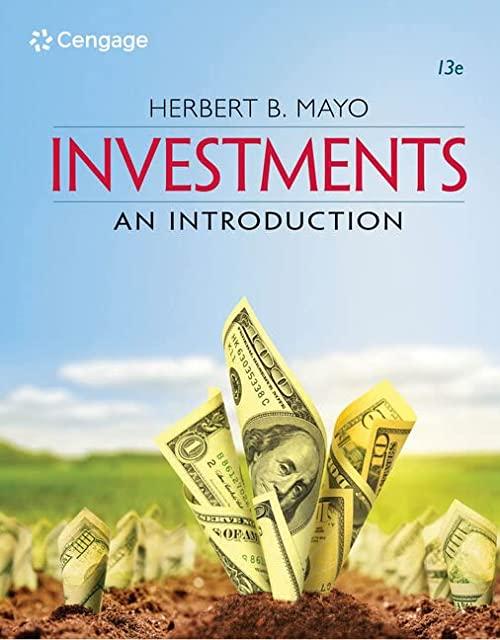Question
1. An investment has a 10% chance of returning 20%, a 70% chance of returning 10%, and a 20% chance of returning nothing. What is
1. An investment has a 10% chance of returning 20%, a 70% chance of returning 10%, and a 20% chance of returning nothing. What is the standard deviation of expected returns?
2. An investment has returned 5%, 3%, 4%, 6%, and 7% in each of the last five years, respectively. We have decided that we want to use historical returns as a proxy for expected future returns. What is the standard deviation of these returns?
3. Why isnt a portfolios standard deviation the same as its components?
4. The following examples of firm-specific or market risk? a. An oil company failing to find oil in one of its oil fields. b. GDP numbers beating expectations. c. The SEC finding accounting irregularities with a company.
5.How might a drop in the price of oil cause both firm-specific and market risk effects?
.6 We have $25 thousand invested in ABC stock (beta=1.5), $50 thousand in DEF stock (beta=0.7), and $15 thousand in GHI stock (beta=1.2). What is the portfolios beta?
7. Long term govt bonds are returning 4%. The equity risk premium is 5%. If XYZ stock has a beta of 0.6, what is its expected return?
Step by Step Solution
There are 3 Steps involved in it
Step: 1

Get Instant Access to Expert-Tailored Solutions
See step-by-step solutions with expert insights and AI powered tools for academic success
Step: 2

Step: 3

Ace Your Homework with AI
Get the answers you need in no time with our AI-driven, step-by-step assistance
Get Started


